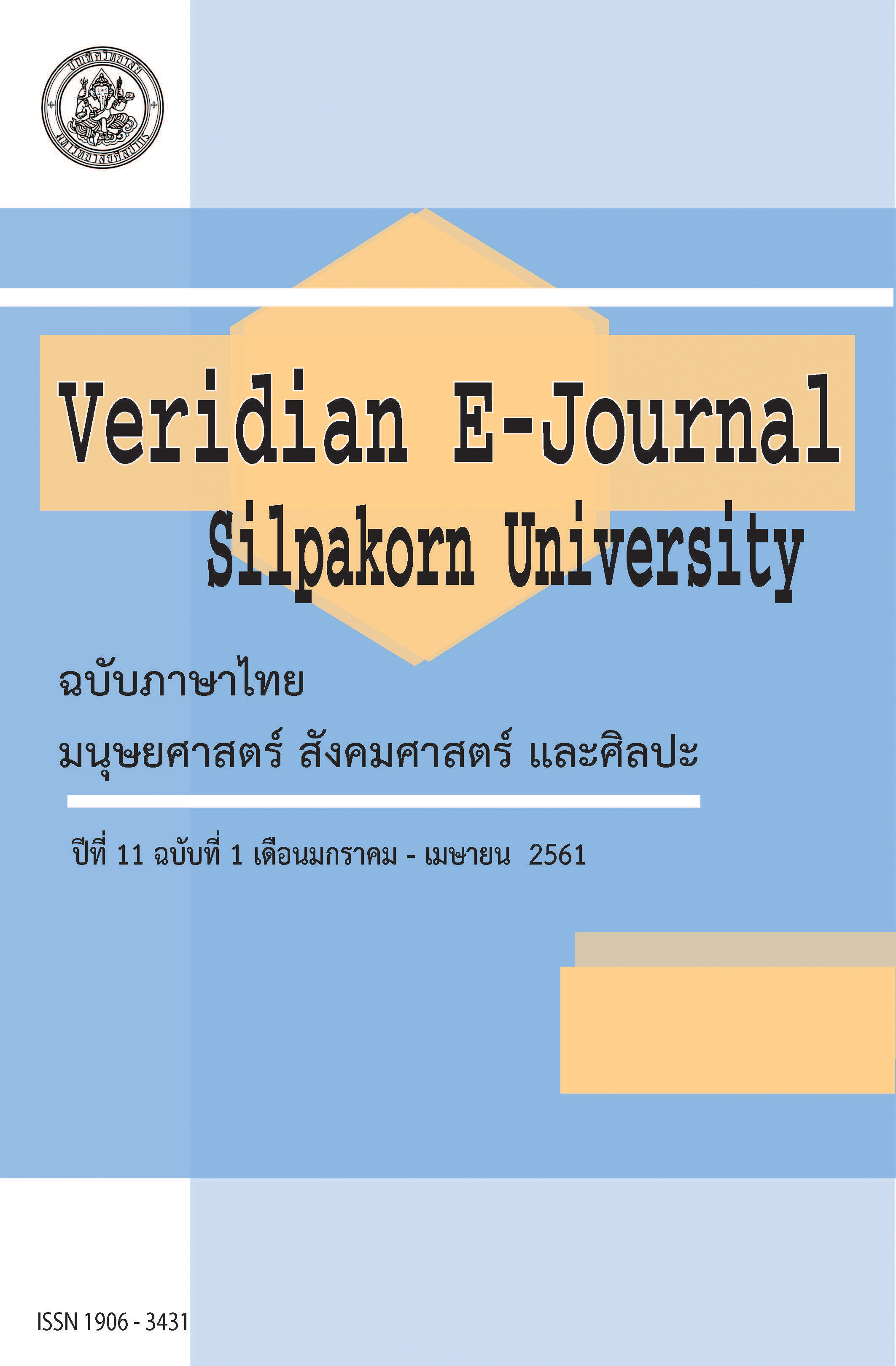การพัฒนาตัวบ่งชี้คุณภาพการจัดการศึกษาอิสลามในประเทศไทย (The Development Indicators of the Quality of Islamic Education Management in Thailand)
Main Article Content
Abstract
การวิจัยนี้มีจุดมุ่งหมายเพื่อพัฒนาตัวบ่งชี้คุณภาพการจัดการศึกษาอิสลามในประเทศไทยตามทฤษฎีระบบ ซึ่งมีวิธีการดำเนินการวิจัย 3 ขั้นตอน คือ ขั้นตอนที่ 1 ศึกษาสภาพปัจจุบันและความต้องการตัวบ่งชี้ กลุ่มตัวอย่าง ประกอบด้วย ศึกษานิเทศก์ นักวิชาการอิสลามศึกษา นักวิชาการศาสนา และครูสอนศาสนาในสถานศึกษาของรัฐ เอกชน และศูนย์การศึกษาอิสลามประจำมัสญิด (ตาดีกา) ในพื้นที่ 3 จังหวัดชายแดนภาคใต้ ได้แก่ ยะลา ปัตตานี และนราธิวาส จำนวน 378 คน ขั้นตอนที่ 2 พัฒนาตัวบ่งชี้โดยการคัดเลือกและกำหนดน้ำหนักความสำคัญขององค์ประกอบและตัวบ่งชี้จากผู้เชี่ยวชาญ จำนวน 11 คน ขั้นตอนที่ 3 ตรวจสอบความเหมาะสมเพื่อยืนยันตัวบ่งชี้โดยการสัมมนาอิงผู้เชี่ยวชาญ จำนวน 12 คน เครื่องมือที่ใช้ในการวิจัย คือ แบบสอบถามจำนวน 3 ชุด วิเคราะห์ข้อมูลโดยใช้ค่าความถี่ ค่าร้อยละ ค่าเฉลี่ย ส่วนเบี่ยงเบนมาตรฐาน และการวิเคราะห์เนื้อหา ผลการวิจัยพบว่า
1) สภาพปัจจุบันของการจัดการศึกษาอิสลามในประเทศไทย โดยภาพรวมอยู่ในระดับมาก ( =3.56, S.D.=0.79) ส่วนความต้องการตัวบ่งชี้คุณภาพการจัดการศึกษาอิสลามในประเทศไทย โดยภาพรวมอยู่ในระดับมากที่สุด ( =4.65, S.D.=0.56)
2) การพัฒนาตัวบ่งชี้คุณภาพการจัดการศึกษาอิสลามในประเทศไทย ใน 3 องค์ประกอบหลัก 8 องค์ประกอบย่อย 92 ตัวบ่งชี้ พบว่า ตัวบ่งชี้ที่มีความสำคัญในระดับมากที่สุด 7 องค์ประกอบ เรียงตามลำดับจากมากไปน้อย คือ ด้านคุณภาพของผู้เรียน 16 ตัวบ่งชี้ ด้านการจัดการเรียนรู้ 14 ตัวบ่งชี้ ด้านครูผู้สอน 12 ตัวบ่งชี้ ด้านผู้บริหาร 11 ตัวบ่งชี้ ด้านผู้เรียน 9 ด้านการบริหารจัดการ 12 ตัวบ่งชี้ และด้านหลักสูตร 9 ตัวบ่งชี้ ส่วนองค์ประกอบที่มีความสำคัญระดับมาก 1 องค์ประกอบ คือ ด้านการมีส่วนร่วมของชุมชน 9 ตัวบ่งชี้
3) ผู้เชี่ยวชาญมีความเห็นว่าตัวบ่งชี้คุณภาพที่มีความเหมาะสมในการนำไปปฏิบัติในการจัดการศึกษาอิสลามในประเทศไทย มี 3 องค์ประกอบหลัก 8 องค์ประกอบย่อย 81 ตัวบ่งชี้ คือ 1) ด้านปัจจัยนำเข้า มี 4 องค์ประกอบย่อย 35 ตัวบ่งชี้ 2) ด้านกระบวนการ มี 3 องค์ประกอบย่อย 31 ตัวบ่งชี้ 3) ด้านผลผลิต มี 1 องค์ประกอบ 15 ตัวบ่งชี้
This research aims to develop indicators of the quality of Islamic education management in Thailand according to system theory. There were 3methods of this research; Step 1: Studies current status and indicator needs. The samples used in this research were Supervisors, Academics Islamic, Religious scholars, Religious teachers in government school, private school and the center of Islamic education in mosque (pundok) in 3 provinces in the southern border: Yala, Pattani and Narathiwas with total of 378 respondents. Step 2: Development indicators by selecting and weighting the priority level of elements and indicators by 11 experts. Step 3: Check for appropriateness to confirm indicators by connoisseurship with 12 experts. The research instruments were 3 sets of questionnaires. The data were analyzed by frequency, percentage, mean, standard deviation and content analysis. The research found that:
1) The current status of Islamic education management in Thailand, the overall was rated at the high level ( =3.56, S.D.=0.79). Part of the needs for the indicator of the quality of Islamic Education management in Thailand, the overall was rated at the highest level ( =4.65, S.D.=0.56).
2) The development indicators of the quality of Islamic education management in Thailand in 3 main elements, 8 minor elements and 92 indicators found that; the 7 minor elements with the highest priority level were on the quality of learners 16 indicators, learning management 14 indicators, teachers 12 indicators, managers indicators 11 indicators, learners 9 indicators, management 12 indicators and curriculum 9 indicators. Part of the high priority level was only 1 minor element is on the community participation 9 indicators.
3) The experts commented that the quality indicators were appropriate for the implementation of Islamic education in Thailand consisted of 3 main elements, 8 minor elements and 81 indicators; 4 minor elements and 35 indicators for input, were 3 minor elements and 31 indicators for process and 1 minor elements and 15 indicators for output.
